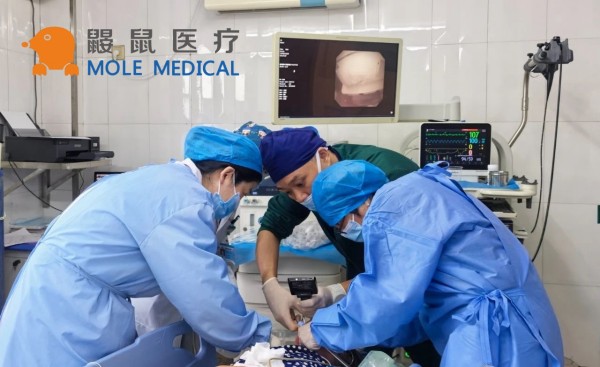Different Types of Intubation Blades Explained
Dec 23, 2023
Intubation blades are critical tools for medical professionals during endotracheal intubation procedures. These blades come in a variety of shapes and sizes to accommodate different anatomies and clinical scenarios. In this section, we will provide an overview of the different types of intubation blades and their sizes commonly used by healthcare providers.
Key Takeaways:
- Intubation blades come in different types and sizes.
- Choosing the right blade size is crucial for effective intubation.
- Intubation blades play a crucial role in facilitating the insertion of an endotracheal tube into the patient’s airway.
- Common types of intubation blades include Miller, Macintosh, D-BLADE, Seward, and Frova.
- Medical professionals should consider patient age, body size, and anatomical variations when selecting the appropriate blade size.
Understanding Intubation Blades
Intubation blades are an essential part of the intubation process, which involves securing an airway in critically ill or anesthetized patients. These tools are a component of the laryngoscope, a device used by medical professionals to visualize the vocal cords and facilitate the insertion of an endotracheal tube into the patient’s airway.
Intubation blades come in various shapes and sizes to accommodate different clinical scenarios and patient anatomies. For optimal intubation success rates, healthcare providers need access to high-quality intubation equipment, including a range of intubation blades.
Miller Blades
Miller blades, also known as straight blades, are an option for intubation with a straight design and a curved tip. The blade lifts the epiglottis and exposes the vocal cords during intubation, making it easier for medical professionals to insert the endotracheal tube. These blades are commonly used for patients with easy intubation conditions or pediatric patients.
When selecting an intubation blade, the most important factors to consider are patient anatomy, clinical scenario, and operator preference. Miller blades are one of several intubation instruments available, along with Macintosh blades, D-BLADE, Seward blades, Frova blades, among others.
Macintosh Blades
Macintosh blades, also known as curved blades, are a popular choice for intubations in most adult patients. The blade’s curved design follows the natural curve of the tongue, providing a better view of the vocal cords. These blades are available in various sizes, ensuring the right fit for each patient.
When selecting an intubation instrument, medical professionals have multiple options to consider. Macintosh blades are one of the most commonly used intubation blade options, providing a time-tested solution for airway management.
D-BLADE
The D-BLADE is a highly advanced intubation blade that incorporates the benefits of both Miller and Macintosh blades. Its patented design features a contoured shape that helps in lifting the epiglottis and providing a better view of the vocal cords. The D-BLADE is a perfect choice for difficult airway management scenarios and is a preferred option for emergency situations.
The contoured design of the D-BLADE allows medical professionals to perform intubation effectively and efficiently with minimum effort. It also reduces the amount of time required for visualization and endotracheal tube insertion, thereby minimizing the chances of complications.
With the D-BLADE’s unique design and enhanced features, medical professionals can significantly improve their successful intubation rates. Its shape allows for a better approach angle and also provides improved space in the oral cavity, reducing the need for jaw lift force. These advantages have made the D-BLADE a popular choice among medical professionals across the world.
Key Takeaways:
- The D-BLADE is a newer type of intubation blade that combines the advantages of both Miller and Macintosh blades.
- It features a contoured shape that helps in lifting the epiglottis and providing a better view of the vocal cords.
- The D-BLADE is often preferred for difficult airway management scenarios and is a popular option for emergency situations.
Seward Blades
Seward blades, also known as flanged blades, are a type of intubation blade that is specifically designed for nasal intubation. These specialized blades have flanges that help guide the endotracheal tube into the patient’s nasopharynx. They are ideal for situations where nasal intubation is necessary, such as in cases where oral intubation is difficult or impossible.
As with all intubation blade options, it is essential to select the appropriate instrument for the patient and the clinical scenario. Seward blades are just one of the many intubation instruments available to healthcare providers, and their unique design and features make them an important addition to any medical professional’s toolkit.
Frova Blades
Frova blades are a popular option for medical professionals who expect to encounter difficult intubation scenarios. These specialized blades offer a unique shape for better maneuverability and increased success rates when inserting the endotracheal tube. With Frova blades, healthcare providers have an additional option to help improve intubation procedures.
If you’re in need of intubation blade options, Frova blades may be an ideal choice for you. These intubation instruments offer a distinct design that can make challenging procedures more manageable, allowing for greater patient safety and optimal results.
Choosing the Right Blade Size
Selecting the appropriate intubation blade size is crucial for successful intubation. The size of the blade should be determined based on anatomical variations, patient age, and body size. Using the correct blade size can help avoid complications and ensure a smoother procedure.
It is recommended to have a range of sizes available to accommodate various patient populations. Adult patients typically require larger blade sizes, while pediatric patients may need smaller sizes.
Some laryngoscope manufacturers offer blades with adjustable size options, which can be particularly useful when dealing with patients who fall in between standard blade sizes.
In summary, selecting the right blade size is an essential part of intubation. Ensuring a range of sizes is available can help improve the success rate of intubation procedures.
Conclusion
As we have discussed, intubation blades are critical instruments for the successful performance of intubation procedures. Medical professionals must have a range of intubation blade options, including Miller, Macintosh, D-BLADE, Seward, and Frova blades, to choose from based on the patient’s age, body size, and anatomical variations.
Understanding the various types of intubation blades and equipment available can help healthcare providers optimize intubation success rates and improve patient safety. Therefore, it is crucial always to select the appropriate intubation blade size and type and to use intubation tools accurately. By doing so, medical professionals can ensure the best possible outcomes for their patients.
Investing in high-quality intubation equipment and regularly updating one’s knowledge about intubation blade options are necessary steps for every healthcare provider that performs intubation procedures frequently. By doing so, we can improve the safety, comfort, and healing of our patients.
Categories
Latest Articles

Disposable Nephroscopes: Redefining Safety & Efficiency in Urology
Introduction The shift towards minimally invasive urological surgery has found a pivotal ally: the disposable nephroscope. As traditional reusable scopes grapple with persistent biofilm contamination risks and soaring sterilization costs, the global medical community is rapidly adopting single-use solutions. This article analyzes the clinical value, technological evolution, and dynamic innovation landscape driving this transformative shift. ... Read more

Disposable Video Laryngoscope Blades: The Ultimate Solution for Preventing Cross-Contamination
In the operating room, as the cold light of a video laryngoscope illuminates a patient’s airway, an age-old medical challenge is being redefined: How can life-saving instruments avoid becoming vectors of infection? Jiangsu MoleMedical drives an innovative safety revolution—replacing reusable devices with single-use, sterile laryngoscope blades that create a pure barrier for critical airways. Traditional video ... Read more
-2.jpg)
FDA & CE Approved Video Laryngoscope: What Makes It Stand Out?
Introduction In high-pressure emergencies and precision-driven operating rooms, video laryngoscopy is revolutionizing airway management. Mole Medical’s FDA and CE-certified technology replaces tactile-dependent “blind intubation” with real-time visual navigation – enhancing safety, accuracy, and clinical outcomes worldwide. Why Certification Matters Mole Medical’s dual certifications validate its global compliance and performance: FDA Clearance: Rigorous validation of safety/efficacy ... Read more

Mole Medical Showcases Advanced Endoscopy Solutions at CMEF Autumn 2025, Driving Global Partnerships
Guangzhou, China – September 26-29, 2025 – The 92nd China International Medical Equipment Fair (CMEF Autumn) concluded successfully on September 29th at the Canton Fair Complex in Guangzhou. Mole Medical Technology Co., Ltd. (Mole Medical) made a significant impact at the event, drawing global medical professionals and partners to its booth (Hall 2.1, Stand Q24) ... Read more

How to Use Disposable Ureteroscopes Safely and Efficiently
In the field of urology, the application of disposable electronic ureteral-kidney pelvis endoscopy catheters is leading the technological innovation in minimally invasive surgeries. According to the 2024 multi-center research data from China’s urology department, among the over 5,000 surgeries included, the patient group using disposable catheters performed significantly better in key indicators such as operation ... Read more



